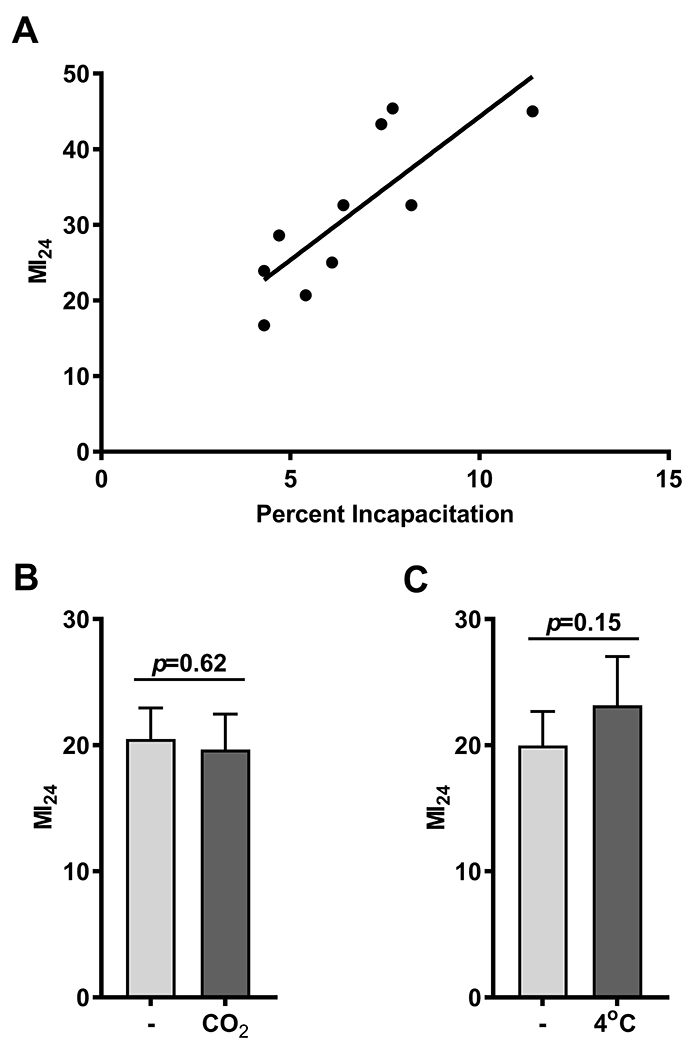Figure 5.

The risk of mortality following bTBI is correlated with the risk of incapacitation following bTBI and is not affected by mobility at the time of bTBI. (A) The MI24 following the standard bTBI protocol versus the percent incapacitation following one strike from the HIT device for 10 mixed-sex strains (w1118 and nine RAL lines) at 0-7 days old. Pearson correlation coefficient 0.80, 95% Confidence Interval 0.355 - 0.952, R2 = 0.6476. (B) The MI24 of mixed-sex, 0-7 day old w1118 flies either mobile (−) or immobile due to exposure to CO2 (CO2) at the time of bTBI. No difference between the MI24s of immobilized and mobile flies (20.5±3.4 and 19.7±3.9, mean± SD). (C) The MI24 of mixed-sex, 0–7 day old w1118 flies either mobile (−) or immobile due to exposure to low temperature (4°C) at the time of bTBI. The MI24s of immobilized and mobile flies are not different (20±3.8 and 23.2±5.4, mean± SD).
